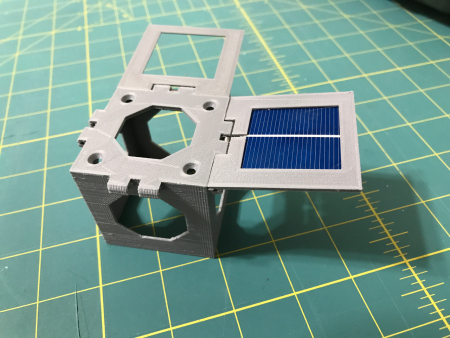
The image on the right was sent to me last night by engineer Joe Latrell. It shows a 3D-printed solar panel designed for use on a cubesat. As he wrote,
[This is] the first integration of a solar panel with the 3D printed material. The panel is not attached but rather embedded in the plastic during the printing process. This helps protect the panel from transport damage and makes it easier to assemble the final satellite. This design needs a slight adjustment but is almost there.
What makes Joe’s work most interesting is where he is doing it. Last week, in posting a link to a story about a Rocket Lab deal that would make secondary payloads possible on its smallsat rocket Electron, I noted that things were moving to a point where someone could build a satellite for launch in his garage.
This in turn elicited this comment from Joe:
As a matter of fact, I am building a PocketQube satellite for launch in Q3 2019. Yes, I am working in a small shop – just behind the garage. Nothing fancy but the price was right. I am working with Alba Orbital and the flight is scheduled on the Electron. These are very exciting times.
Alba Orbital is smallsat company aimed at building lots of mass produced smallsats weighing only about two pounds.
Anyway, Joe then followed up with another comment with more information:
This first [satellite] is just to see if it can be done. I plan to have it take a couple images and relay data regarding the orientation methods I am planning to use (gravity and magnetic fields). If it works, I am hoping to get funding to develop a small series of satellites to track global water use.
It is also a good way to test some of the materials I think would make spacecraft lighter and cheaper.
Yesterday he sent me the above image. This is the future of unmanned satellites and planetary probes, small, light, cheap, and built with 3D printers by single entrepreneurs. And because of their inexpensive nature, the possibilities for profit and growth are truly almost infinite, which in turn will provide developments that make space travel for humans increasingly smaller, lighter, cheaper, and easier to build as well.
To repeat Joe’s comment, these are very exciting times.


